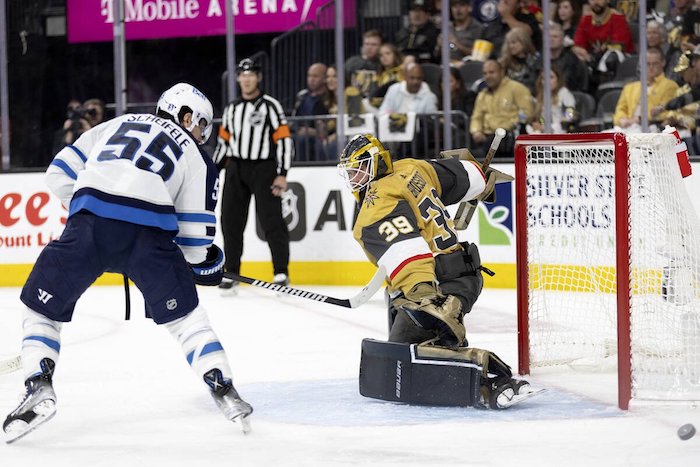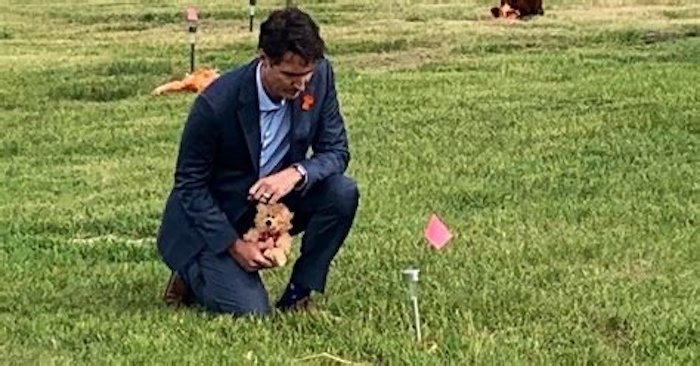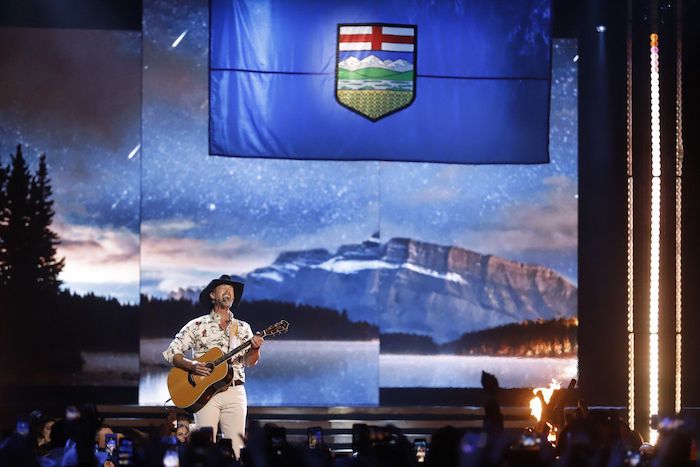Bruce Dowbiggin
Recency Bias: Why Kraken, Knights Avoided Expansion Fate

Like isn’t fair. That’s the triusm. For fans of established NHL teams the sight of the Vegas Golden Knights and Seattle Kraken still in the playoffs— while their own teams are playing golf— is a little galling. Aren’t expansion teams supposed to lose a lot for a long time before gaining success?
The Washington Capitals in their debut season of 1974-75 posted the worst single-season record ever at 8-67-5. (Imagine how much worse the losing if this occurred before the demise of ties?) The Caps never won two consecutive games; their 21 total points were half that of their expansion brethren, the Kansas City Scouts; their .131 winning percentage is still the worst in NHL history, and they lost 37 straight road games.

Only marginally better were the 1992-93 expansion Ottawa Senators, who brought the NHL back to Canada’s capital after the first Senators team folded in 1934. The team recorded three NHL records that season: longest home losing streak of eleven; longest road losing streak with a total of 39 (nearly the whole season) and fewest road wins in a season, with just one victory.
In the same year of 1992-92, the San Jose Sharks, a hybrid expansion team in its first year after leaving Cleveland, posted a brutal 11-71-2 mark. The Sharks allowed 10 or more goals in a game three times and finished the season 22nd in both scoring (219 goals for) and goaltending (359 goals against).
And so on. The 2000-01 Atlanta Thrashers went 14-57-7. The 1972-73 New York Islanders were a putrid 12-60-6 in their inaugural NHL campaign. (At least the Islanders paid off their fans for the abysmal start, winning the Stanley Cup within eight years and preceding to rip off four straight Cups from 1980-83.) The Caps took till 2018 to get a Cup. Kansas City moved to become the Colorado Rockies and then the New Jersey Devils before becoming a huge success with three Cups in 1995, 2000 and 2003. The Sharks and Senators have no championships at all.
Many had predicted similar failure for the Knights. But it didn’t happen that way. Nor did it go sideways in Seattle, either. For one, the enormous $500M Vegas/ $650M Seattle expansion fees demanded some competitiveness. Then, cap pressure from Gary Bettman’s salary cap forced established teams into bad decisions, forcing teams to be creative when they could not pay their stars more money. So clubs began handing out no-movement clauses (NMC) and no-trade-clauses (NTC) like Halloween candy in lieu of salary. These alterations would get their revenge in the Vegas Golden Knights expansion fiasco (for teams).
To guarantee a fair expansion draft process for the Golden Knights the league hired former Vancouver assistant GM Laurence Gilman to design a protocol for the selections. What he found did not exactly correspond to the assignment letter: “It was called an expansion draft, but an expansion draft is what occurred in 2001 when Minnesota and Columbus selected players between them. This was an asset-harvest event. Las Vegas wasn’t competing with another franchise and had the ability to map out exactly what they wanted to harvest.”

That they did. In 2016, the Knights had hired former player and ex-Washington Capitals GM George McPhee, who had from 1997 to 2014 orchestrated the building of the Caps from sad sacks to contenders. McPhee then hired personnel specialist Kelly McCrimmon to be his right-hand man in the process. By 2017, McPhee and McCrimmon understood how the expansion game was changed by issues such as NMCs and NTCs. In 2017, there were 66 NHL players who owned a NMC in their contracts, requiring them to be protected by their clubs in the expansion draft— even if those clubs would rather get out from under their contracts.
Columbus had given goalie Sergei Bobrovsky, Brandon Dubinsky, Nick Foligno and Scott Hartnell contracts with no-move-clauses, long before GM Jarmo Kekalainen had contemplated expansion ramifications, and they suffered the consequences as a result. Enter McPhee who worked a deal where Vegas would select William Karlsson — who had just one goal in his final 43 games in Columbus — while also receiving a first-round pick, a second-round pick and David Clarkson’s expensive contract. Karlsson would score 43 goals and 78 points in the Knights first season. The two draft picks would be turned into a deal for Nick Suzuki and, eventually, Max Pacioretty.
McPhee then targeted Anaheim. The Ducks were forced to protect Kevin Bieksa who didn’t have much hockey time left. The NMC in his contract required protection over younger teammates like Theodore, Josh Manson and Sami Vatanen. So Anaheim traded defenceman Shea Theodore to Vegas so Vegas would draft Clayton Stoner instead of one of their prime prospects. And so on.

The Knights exploitation of NMCs and NTCs turned trading from a trickle into a fire hose, making 10 trades before and after the 2017 draft. That yielded 12 draft picks, while also adding valuable pieces in Marc-Andre Fleury, Shea Theodore, Karlsson, Reilly Smith, Jonathan Marchessault and Alex Tuch as part of those deals.
Vegas became the best expansion team in any major pro sport ever. The newest team in the NHL has missed the postseason just once since its arrival in 2017-18, in 2022. This while Buffalo, Detroit and Ottawa have missed every postseason in that span, while Anaheim and New Jersey have just one playoff appearance since the Knights’ first season. Naturally this success did not go over well with those clubs and others who felt Vegas needed to pay some dues before becoming a regular in the playoffs.
So when it came time for Seattle Kraken to build their first roster the sentiment around there NHL was “let’s not do that again”. For example, the Kraken wouldn’t get a crack at the Knights’ roster— they were exempted from the expansion draft process. One other specific change was in the number of NMC and NTC players. After 68 in 2017, there would be just 52 players in that position when the Kraken made their selections in 2021. In short, there were fewer opportunities to pluck cap-strapped teams for players like Karlsson and Marchessault.

The lack of depth on the Kraken showed initially. Seattle wound up 15th in the Western Conference with just 60 points and a minus-69 goal differential. Comparisons to the Knights proved premature. It took another offseason for the Kraken to be competitive. But Matty Beniers is a leading Calder Trophy candidate; it looks like he will be a foundational piece for this fledgling franchise. Vegas and Seattle duelled for the leadership of the Pacific Division all season before Vegas prevailed.
Now they’re in the postseason with the Knights, playing on equal footing with the best. Few players remain from that first Knights team, and few more with the Kraken. But the results remain the same.
Sign up today for Not The Public Broadcaster newsletters. Hot takes/ cool slants on sports and current affairs. Have the latest columns delivered to your mail box. Tell your friends to join, too. Always provocative, always independent. https://share.hsforms.com/16edbhhC3TTKg6jAaRyP7rActsj5
Bruce Dowbiggin @dowbboy is the editor of Not The Public Broadcaster A two-time winner of the Gemini Award as Canada’s top television sports broadcaster, he’s a regular contributor to Sirius XM Canada Talks Ch. 167. Inexact Science: The Six Most Compelling Draft Years In NHL History, his new book with his son Evan, was voted the seventh-best professional hockey book of all time by bookauthority.org . His 2004 book Money Players was voted sixth best on the same list, and is available via http://brucedowbigginbooks.ca/book-personalaccount.aspx
Bruce Dowbiggin
Carney Hears A Who: Here Comes The Grinch

It’s a big day for the Who’s of Whoville. Mayor Augustus Maywho is now polling at 62 percent approval. Cindy Lou Who and Martha May Whovier can barely contain their trans-loving heart that finally the Pierre The Grinch is done.
Okay it’s not WhoVille. It’s Canada and it is leader Mark Carney who’s zooming in the polls against Pierre Poilievre. But it might as well be the real nation that Carney commands today. As 2025 comes to a conclusion Donald Trump seems the least of Whoville’s perils. For example:
The NDP government in B.C. has now declared that future legislation must be interpreted through the lens of the United Nations Declaration on the Rights of Indigenous Peoples. According to Chief Bent Knee (David Eby) this means that the province cannot act independently of the progressive diktats of Sudan, Nepal, Moldova and other international titans. Having been informed of Canada’s “genocidal” behaviour by Trudeau in the Rez Graves pantomime, the UN folk will no doubt look on Canadians as worthy of punishment.
The UNDRIP menace has been around since the days when Skippy Trudeau was wielding the mace in Parliament. On June 20, 2021 the federal government passed UNDRIP into law by a vote of 210 to 118. (The Liberals, NDP and Bloc all voted in favour.) The only party that opposed it were the Conservatives. In defence of those hapless boobs none of them voting yes ever expected a province to align itself with such legislation. That’s the Canadian way. Act on conscience. Retract on self preservation.

But on the heels of Eby’s unopposed capitulation to B.C.’s many “peoples” in recent land settlements, ones that threaten the legal right to properties of home owners, the wholesale framework for governing the province now will be determined by appeal to the UN.
The Carney crew — who act as though Canada’s indigenous communities are now equal partners in Confederation— assure Canadians that judicious lawyering by government savants has everything under control, but anyone trusting the Liberals after the past decade is in need of counselling.
The B.C. conundrum plays into another of the challenges (read: disasters) faced in B.C. by the Elbows Up brigade. Namely the much-heralded memorandum of understanding on energy policy between the feds and Alberta. Canadians were assured by Ottawa that this federal government sees pipelines as a priority, and getting Alberta’s product to tidewater as an urgent infrastructure need. Carney described the MOU as if it were a love-letter to the restless West. How is he going to get pipelines through to the B.C. coast when Eby and the indigenous said it was a no-go? Trust us, said Carney.

Before you could say Wetaskiwin dark clouds gathered on the deal. Smith took it in the ear from Alberta separatists for compromising anything to the feds. Carney, meanwhile, ran into the predictable roadblock from B.C. Eby talked of maybe allowing pipelines in the future, but the ban on shipping off the province’s shoreline was verboten.
To test the resilience of the MOU the federal Conservatives (remember them?) put forward a motion to build the pipeline from Alberta to the B.C. coast. Even though the motion used the same language of the MOU between Danielle Smith and Mark Carney, the Liberals and their hand maidens defeated the motion. Carney himself abstained because, hey look at that shiny object.
Immediately the Trudeaupian Deflection Shield was employed. Here’s Liberal Indigenous Service minister and proud Cree operative Mandy Gull Masty “Today’s motion that’s being put on the floor is not a no vote for the MOU. It’s a no vote against the Conservatives playing games and creating optics and wasting parliamentary time when they should be voting on things that are way more important.”
Robert Fife, the highly rated G&M scribbler who just won some big award, led the media pack, “Conservatives persist with cute legislative tricks, while the government tries to run a country.” Run a country? Into the ground?
Let’s not forget the $1.5 billion bloviators at CBC. They, too, say the vote is a big loss for the Tories. “It risks putting them offside, what is a very top priority and frankly, was considered a big win for Alberta Premier Danielle Smith.’” said Janyce McGregor. Here’s Martin Patriquin on one of the Ceeb’s endless panels. “It’s embarrassing, man. I don’t see any sort of political advantage to what happened today.”
Embarrassing? The Libs have committed to re-building gas pipelines in Ukraine, even as they stall on developing pipelines in Canada. Luckily CBC washrooms have no mirrors. And there’s always Donald Trump to deflect from the pantomimes of Canadians Laurentian debating club.
Here, CTV hair-and-teeth Scott Reid is nursing a Reuters poll that has Trump’s approval at historic lows of 36 percent. Reuters is a firm that predicted Kamala winning the presidency. Until she didn’t on Nov.4. Meanwhile Rasmussen, which correctly had Trump ahead the entire campaign, has his current approval at 44 percent while the RCP average is 43.9.
But corrupt data to make Trump seem odious is no sin in WhoVille Ottawa. Keep feeding the Karens bad data. At least Canadians have their beloved healthcare to fall back on. Or maybe their beloved MAID. A Saskatchewan woman suffering from parathyroid disease has revealed that she is considering assisted suicide, because she cannot get the surgery she needs.
“Jolene Van Alstine, from Saskatchewan, has extreme bone pain, nausea and vomiting. She requires surgery to remove a remaining parathyroid, but no surgeons in the province are able to perform the operation. In order to be referred to another province for the operation, Van Alstine must first be seen by an endocrinologist, yet no Saskatchewan endocrinologists are currently accepting new patients.
The pain has become so unbearable that she has been approved for Canada’s euthanasia and assisted suicide program, with the ending of her life scheduled to take place on 7 January 2026.”
Well. Happy New Year, Canada. May no one offer you MAID in the next twelve months.
Bruce Dowbiggin @dowbboy is the editor of Not The Public Broadcaster A two-time winner of the Gemini Award as Canada’s top television sports broadcaster, his new book Deal With It: The Trades That Stunned The NHL And Changed hockey is now available on Amazon. Inexact Science: The Six Most Compelling Draft Years In NHL History, his previous book with his son Evan, was voted the seventh-best professional hockey book of all time by bookauthority.org . His 2004 book Money Players was voted sixth best on the same list, and is available via brucedowbigginbooks.ca.
Bruce Dowbiggin
Wayne Gretzky’s Terrible, Awful Week.. And Soccer/ Football.

Inquiring minds want to know: Why did FIFA (Federation of International Fraud Artists) award American president Donald Trump a new “Peace Prize” at the Washington D.C. draw for the June/ July tournament? The usual suspects are paralyzed with rage. Everyone else is laughing at the kabuki theatre stunt.
The short answer is that if you were FIFA and you were receiving a reported billion or more dollars from the U.S. and the Canadian/ Mexican cities hosting the 48-team tournament you’d give the host more than a bottle of wine and flowers as a thank-you. Thus the ugly statue and the Boy Scout medal. The obsequious awarding of the prize and match medal were proportionate to the greed of FIFA in extorting the cash.
(America’s fainting goat media immediately complained about unearned awards for little virtue, forgetting as usual that the Nobel folks gave Barack Obama a Peace Prize after nine months in the White House for simply being a black man.)
Trump getting a peace award from FIFA, the most corrupt sports body in the sports world, is mint, however. You can’t write this stuff. (They should give it to him on a speed boat heading across the Caribbean.) The Donald then playfully suggested that Americans leave the name football to the soccer folks because, you know… feet and a ball. More outrage from NFL fans.
So what was the gift for the two Canadian cities hosting games who have also coughed up plenty? Toronto says its estimated budget is $380 million for six games/ B.C. tax payers are obliged to cough up an estimated $580 million for Vancouver’s five games). For cities with, how shall we say, bigger fish to fry.
Sadly all they got was a little farce in which a delighted PM Mark Carney was allowed to Canada as the first ball to start the picking, evidently unaware that all the balls he had to select from also said Canada. Carney’s joy was tempered when he saw Mexican president Claudia Sheinbaum draw a ball that said “Mexico” while Trump— in on the fix— got one entitled “United States”.

In a final attempt to curry favour with the fleeced nations FIFA boss Gianni Infantino gathered the world leaders for a painful onstage selfie, marking the first time Trump and Sheinbaum had ever met in the (orangey) flesh. Call it National Lampoon’s Soccer Vacation.
Having exhausted itself with the peace prize falderol FIFA evidently forgot to put any more thought into the rest of the 55-minute run-up to the draw. While soccer/ footie fans around the world ground their teeth in impatience the organizers presented a combination Eurovision/ People’s choice Awards ordeal of failed cues, untranslated interviews (the Spanish translator showed up about 30 minutes late) and pregnant pauses.
Host Heidi Klum’s stunning gold dress nearly made up for her wooden repartee with comedian Kevin Hart (“not sure why I’m here”) and co-host Rio Ferdinand, former star English defender who, alas, never won the WC. But that was all an appetizer for the real low point, the introduction of global brand stars to pick the draw. NFL legend Tom Brady, NBA legend Shaquille O’Neal and NHL… er, player Wayne Gretzky.
Their task, hectored by the hosts, was to draw a ball, unscrew the thing, withdraw a nation’s name and so on. While there may have been some tension in the audience there was no appreciation of that on the screen as more clunking dialogue and curious pronunciations (Ferdinand kept referring to Group “Haitch”) landed dead on the floor.
The nadir of the ceremony—indeed of his career— was Gretzky’s contribution. Brady and O’Neal had managed to survive their task of unscrewing the ball and pronouncing a name, but Gretzky was brought low by the stage business of the balls and the nations he was forced to announce.

The clearly flustered Gretz (he insisted he’d practiced all morning) wrestled manfully with the balls. Finally the producers went with a long shot of him fumbling in the dark. Then he topped that. Gretzy apparently thinks there are countries called “North Mack-a-donia” and “Cur-ack-ow.” Other stabs at geography were almost as tortured.
Bitter Canadians could put up with him sucking up to Trump (he was mentioned as being in the crowd at the DC Xmas tree lighting) but failing geography is unforgivable. The week that started with Gretzky in a photo golfing at POTUS’s Jupiter, Florida, golf course was ending with him pummelled for his abuse of nations with different-sounding names. The Wayne Gretzky Center For Kids Who Want To Talk Good.
The moral: Never send a centre to do a netminder’s job. Makes you understand why Bobby Orr has laid low since his Trump endorsement came out.
With that bracing date with immortality disposed of the draw proceeded. We had been pounded for an hour about how great the tournament was, and finally footy fans got what they wanted. As a host Canada got a bye into the field. Their reward is playing the tenacious Swiss and, gulp, probably Italy, which is forced to qualify after playing with their food for too long. (Insert your Stanley Tucci joke.)
If not Italy then one of Wales, Bosnia and Herzegovina or Northern Ireland. Oh, right Qatar is in there too as fodder. Been nice knowing you, Canada. The Americans somehow drew a creme puff quartet of Australia, Paraguay and Slovakia, Kosovo, Turkey or Romania. Money can’t buy you love, but it can get you a warm hug from FIFA.
In the end it’ll be one of Brazil, Argentina, Germany or France for the final in the NJ Meadowlands on July 19. Maybe they’ll have a spelling bee at halftime. Or maybe they’ll bring back Trump for the final game to give him another peace prize. Just don’t ask Gretzky to announce Lothar Matthaus, Bruno Guimaräes or Gabriel Magalhäes.
Bruce Dowbiggin @dowbboy is the editor of Not The Public Broadcaster A two-time winner of the Gemini Award as Canada’s top television sports broadcaster, his new book Deal With It: The Trades That Stunned The NHL And Changed hockey is now available on Amazon. Inexact Science: The Six Most Compelling Draft Years In NHL History, his previous book with his son Evan, was voted the seventh-best professional hockey book of all time by bookauthority.org . His 2004 book Money Players was voted sixth best on the same list, and is available via brucedowbigginbooks.ca.
-

 National2 days ago
National2 days agoCanada’s free speech record is cracking under pressure
-

 Digital ID1 day ago
Digital ID1 day agoCanada considers creating national ID system using digital passports for domestic use
-

 Business2 days ago
Business2 days agoAlbertans give most on average but Canadian generosity hits lowest point in 20 years
-

 Fraser Institute1 day ago
Fraser Institute1 day agoClaims about ‘unmarked graves’ don’t withstand scrutiny
-

 Business2 days ago
Business2 days agoTaxpayers Federation calls on politicians to reject funding for new Ottawa Senators arena
-

 International2 days ago
International2 days ago100 Catholic schoolchildren rescued, Nigeria promises release of remaining hostages
-

 Alberta1 day ago
Alberta1 day agoHere’s why city hall should save ‘blanket rezoning’ in Calgary
-

 Business1 day ago
Business1 day agoToo nice to fight, Canada’s vulnerability in the age of authoritarian coercion









